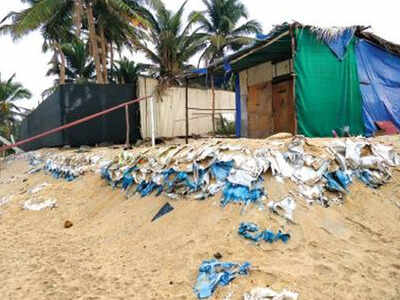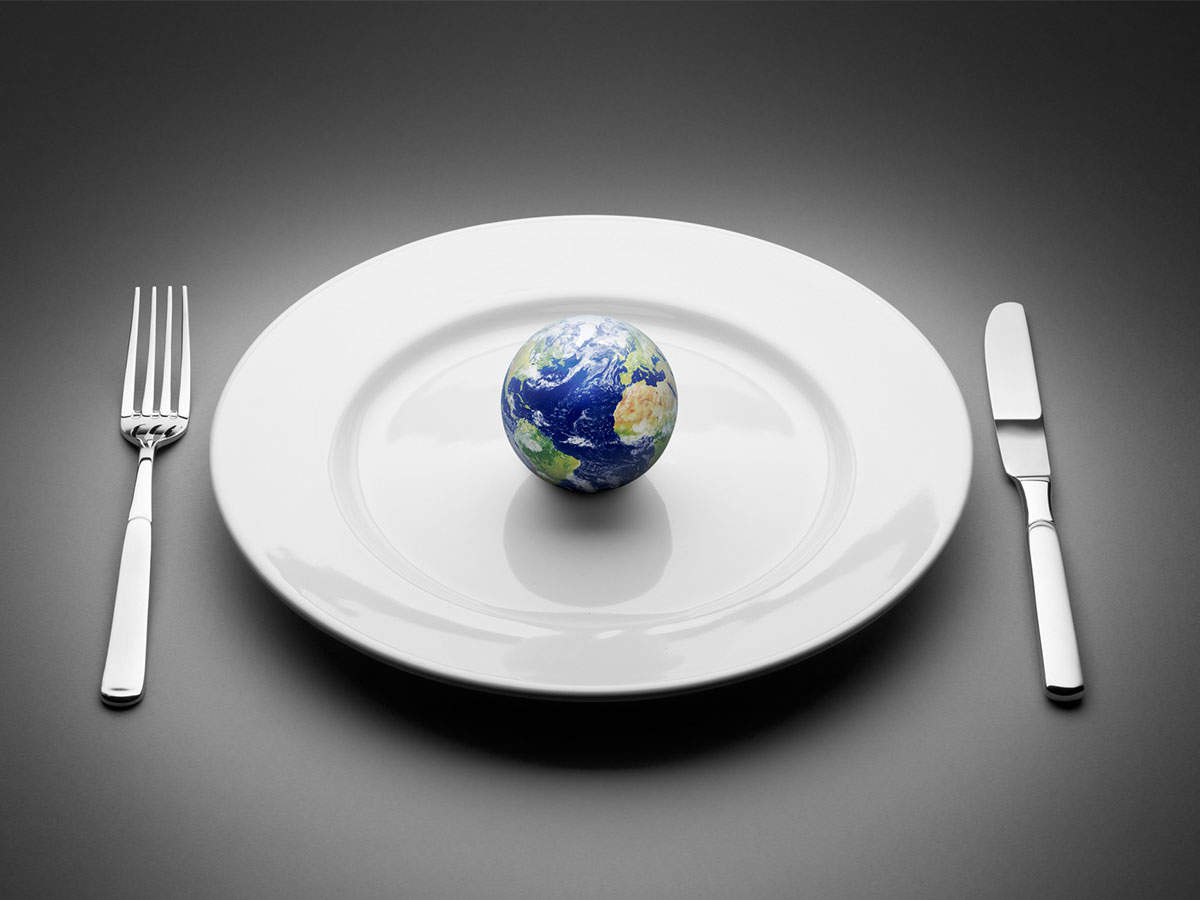
COLVA: With the tourism season prematurely cut short due to the coronavirus pandemic, most of the beach shacks may have been dismantled already, but the sandbags placed on their periphery remain where they were stacked.
Sandbags are used as a form of reinforcement for shacks, to hold back the rising sea, tides, frequent storms, squalls and cyclones.
The failure of shack owners to remove the sandbags, and the tourism department’s failure to maintain the beach and enforce coastal regulation zone (CRZ) rules, is endangering and damaging beaches, experts say.
For sand bagging, cement bags are filled with sand and then stacked. Cement bags are made up primarily of three components, virgin material, plastic masterbatches and a UV coating, making them non-biodegradable.
Ex-scientist at the National Institute of Oceanography (NIO) Antonio Mascarenhas said that using plastic on beaches is in blatant violation of CRZ rules. “The sandbags have collapsed as they are woven with thin threads. It is important to note that this has happened in fair weather and that there is no evidence of any wave activity. The area appears disturbed as the cement bags are shattered, probably because of the heat of the sun that has pulverized the threads or due to deflation by wind action or maybe, due to footfalls,” he said.
While granting permission for shacks in 2019, the then tourism director, Sanjiv Gadkar, had made it amply clear that shack owners would be allowed to use sandbags, but they would have to clear them at the end of the season or action would be initiated.
Now, current director Menino D’Souza has said that his department will carry out their inspection only after the season officially ends and all shacks are dismantled, and that defaulters will be booked for CRZ violations.
Mascarenhas said it is well-established that any interference in the wave run-up drastically alters the profile of the beach.
“While structures such as sandbags enhance sand erosion, the bigger impact is that their microfibers are now scattered on the sand. Once hit by the waves, these will enter the marine domain, be ingested by fish and ultimately find their way onto our plates,” he said. “Microplastics are the biggest threat to marina fauna and unfortunately, it is happening right in front of our eyes.”
Sandbags are used as a form of reinforcement for shacks, to hold back the rising sea, tides, frequent storms, squalls and cyclones.
The failure of shack owners to remove the sandbags, and the tourism department’s failure to maintain the beach and enforce coastal regulation zone (CRZ) rules, is endangering and damaging beaches, experts say.
For sand bagging, cement bags are filled with sand and then stacked. Cement bags are made up primarily of three components, virgin material, plastic masterbatches and a UV coating, making them non-biodegradable.
Ex-scientist at the National Institute of Oceanography (NIO) Antonio Mascarenhas said that using plastic on beaches is in blatant violation of CRZ rules. “The sandbags have collapsed as they are woven with thin threads. It is important to note that this has happened in fair weather and that there is no evidence of any wave activity. The area appears disturbed as the cement bags are shattered, probably because of the heat of the sun that has pulverized the threads or due to deflation by wind action or maybe, due to footfalls,” he said.
While granting permission for shacks in 2019, the then tourism director, Sanjiv Gadkar, had made it amply clear that shack owners would be allowed to use sandbags, but they would have to clear them at the end of the season or action would be initiated.
Now, current director Menino D’Souza has said that his department will carry out their inspection only after the season officially ends and all shacks are dismantled, and that defaulters will be booked for CRZ violations.
Mascarenhas said it is well-established that any interference in the wave run-up drastically alters the profile of the beach.
“While structures such as sandbags enhance sand erosion, the bigger impact is that their microfibers are now scattered on the sand. Once hit by the waves, these will enter the marine domain, be ingested by fish and ultimately find their way onto our plates,” he said. “Microplastics are the biggest threat to marina fauna and unfortunately, it is happening right in front of our eyes.”

Coronavirus outbreak
Trending Topics
LATEST VIDEOS
City
 Muslims help perform last rites of a Hindu woman in Indore
Muslims help perform last rites of a Hindu woman in Indore  Madhya Pradesh: COVID-19 survivor forced to put house on sale due to inhuman behaviour of neighbours
Madhya Pradesh: COVID-19 survivor forced to put house on sale due to inhuman behaviour of neighbours  PM Narendra Modi to address the nation on Tuesday at 10am
PM Narendra Modi to address the nation on Tuesday at 10am  COVID-19: Maharashtra minister Jitendra Awhad tests negative, home-quarantines himself
COVID-19: Maharashtra minister Jitendra Awhad tests negative, home-quarantines himself
More from TOI
Navbharat Times
Featured Today in Travel
Quick Links
Kerala Coronavirus Helpline NumberHaryana Coronavirus Helpline NumberUP Coronavirus Helpline NumberBareilly NewsBhopal NewsCoronavirus in DelhiCoronavirus in HyderabadCoronavirus in IndiaCoronavirus symptomsCoronavirusRajasthan Coronavirus Helpline NumberAditya ThackerayShiv SenaFire in MumbaiAP Coronavirus Helpline NumberArvind KejriwalJammu Kashmir Coronavirus Helpline NumberSrinagar encounter
Get the app



